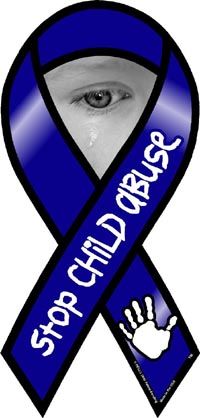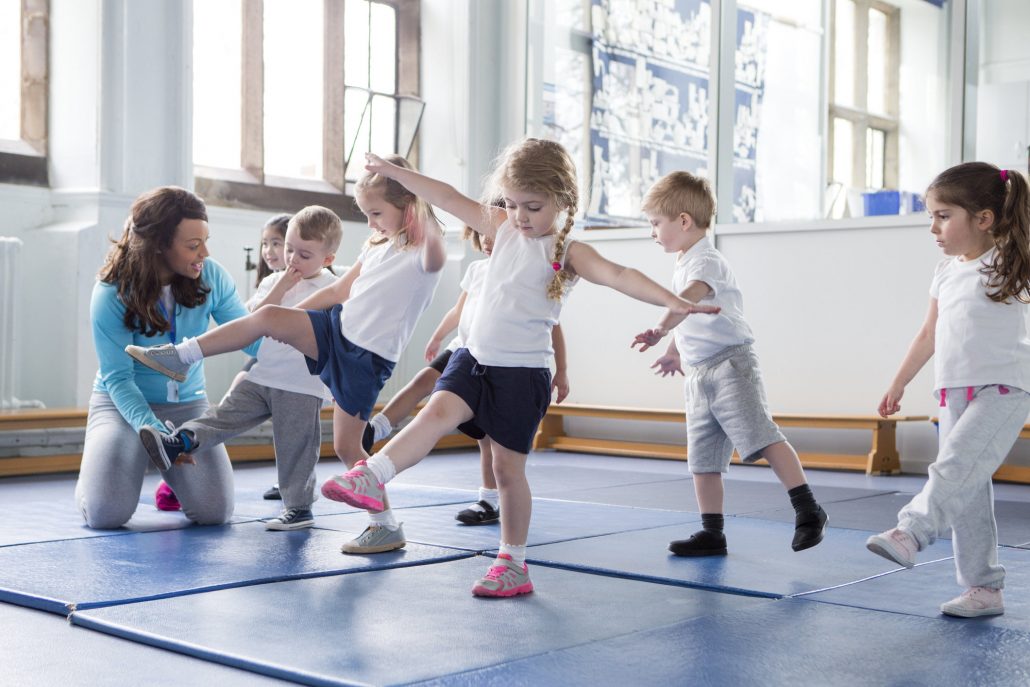Using Service Projects to Help Kids Transition to Spring
Spring can be a challenge for parents and children as school is coming to an end, the weather can be unpredictable which can be boring for all. An idea for the spring season is engaging your children in opportunities to serve others. Service projects can assist the elderly, civic organizations, church groups, and more. Being of service to the community provides children with the opportunity to be responsible, engaged, demonstrates compassion, and shows them they can make a difference.
- Donate craft kits to the hospital wing of a children’s hospital
- Organize a board game night at your local nursing home.
- Organize a food drive in your neighborhood, church, or school.
- Have a garage sale and donate the proceeds to your favorite cause.
- Plan a movie day at a children’s home or shelter.
- Organize a school supply drive.
- Bring gently used board games and decks of cards to a local homeless shelter.
- Pick up litter in your neighborhood or park.
- Donate used baby and toddler toys to a nearby church, synagogue, mosque, or temple for their youngest members. Most places of worship have a place for little ones to be entertained during services.
- Go through the books you’ve grown out of and donate them to the waiting room of a local dentist or doctor.
There are many service projects that keep your children busy as well as making an impact in their respective community.
Submitted by:
Pam Richardson, LMSW

April is National Child Abuse Awareness Month! Help us spread the word by posting on your social media feed #wearblueTFI for a chance to win a TFI t-shirt! Post your pictures on our Facebook pages or on our Twitter feed. @TFIfamily @TFIconnections or @txfamilyinit!

Kansas News
Howard and Carrie House/Cascarano-House of Cherryvale, Kansas have been foster parents for less than a year but they have already made a difference in the lives of several foster children they have taken into their home. Howard and Carrie have fostered 8 children and strive to maintain them in order to provide consistency. Howard and Carrie have fostered children ages 7 to 17, male and female. They have done an outstanding job as new foster parents!
Between Families Recruitment Moment

Mark Your Calendars and Purchase Your Tickets!
TFI is partnering with the Wichita Wingnuts for their second annual Community Benefits Concert which will be held on Saturday, April 22nd, 2017 at Lawrence-Dumont Stadium. This year’s concert will feature 2 of the hottest acts in country music, Billy Currington & Chris Janson plus 3 local acts TBD. Tickets for the event are $40. TFI is selling tickets for the event and 50% of the proceeds will go towards our organization. Contact Ali Ardery to purchase your tickets aardery@tfifamil.org / 913-375-4888 or purchase the tickets online at wingnutstfi.eventbrite.com
tfifamilyservices.org for Kansas and Nebraska
tfifamily.org for Oklahoma
tfifamily.org for Texas
Oklahoma News
When you became a TFI resource foster parent, you were assigned a Foster Care Worker who works with and supports you and the children placed in your home. A large part of a successful placement is making a good match at the time of placement. There are a multitude of reasons that foster parents may not have had a placement. In an effort to ensure that children are matched to the foster home that can best meet their needs, agencies must consider many factors. Some of these include the following:
Placement Preference
The more accepting you can be in working with children who have behaviors, and the more flexible you are on gender and age of children you would like placed in your home, the more referrals for placement you are likely to receive.
Your worker along with input from you filled out a Foster Parent Profile. Your family profile contains basic information on how to reach you if there is a possible placement for your home. The profile also lists the ages and sex of your biological children living with you, along with your preferences regarding age and gender of children you are interested in taking through foster care. As a result, it is generally true that the more restrictions you place on the type and number of children you want, the longer you will wait. If you have expressed certain preferences as to the types of children that you will care for, this could delay placements for you. For example, if you limit yourself to infants and toddlers you will most likely wait longer for placement, when the current age needed is between the ages of 6 to 12.
Location
When Admissions staff is looking for a placement, they will pull up all available homes that meet the needs of the child. Based on several other factors, including location and ability to keep siblings together, they will call the best “match” family first.
Sometimes, a TFI home that can best meet the child’s needs is not available in the child’s home county. There may be a good match in an area that is further away. However, this may not meet the need of providing a home close enough to make family visits and mental health treatment easily accessible. For that reason, homes sponsored by other Child Placing Agencies may be chosen for placement instead of a TFI foster home.
Answering the Call
If there is no response, Admissions must move on to find a placement the same day or night as the referral. Placement of children who are moving from one foster home to another often allow enough time to wait for a family to call back. It is important that we have all phone numbers that allow us to try and contact you immediately if we have a child in need of placement.
When you are called with a referral, you will be given all known information to help you make a decision about taking the placement. You may only accept placements when the call comes from TFI Family Connections LLC ’s Admissions Department or your assigned Foster Care Worker.
Generally Admissions
Staff will make a follow-up call to you to make final arrangements even though your Foster Care Worker may have already given you all the referral information regarding the child. If agencies (including DHS) other than TFI Family Connections LLC contact you directly for foster care placements, please direct them to call TFI’s Admissions Department at 1-877-921-4114.
Please join us in committing to do our best to ensure that every child has a safe and stable placement.
Connections Compliment

Meet the Orick Family
Steve and Carrie currently reside in Blair OK. Steve and Karri work full time and have two teen biological children whom they are also raising. Steve and Karri have been fostering since 05/19/16. Their first placement was a sibling set of four. Steve and Karri have had success with caring for these four siblings until these children were able to find a forever home. These children were placed in an adoptive home in Lawton. When the children left their home, they immediately contacted me asking to place children in their home, Karri and Steve said their home was too quiet. Steve and Karri got a call about a month later with a request for placement for a sibling set of two and they accepted, then about a week later they received a call for placement for another sibling set of two and accepted. This family has had 8 children in their home in less than a year. This is an example of two great foster parents who are dedicated, enthusiastic, caring, and loving family who open their home to care for the children of Oklahoma. GREAT JOB STEVE AND KARRI ORICK.
Nebraska News
Training Hour Requirements
As you know, your foster care licensure issued by DHHS is valid for two years before a renewal is needed. For that renewal, yearly training hours are required. Twelve hours of training are required each year of your licensure. At the end of two years, you will need to have a total of twenty-four hours. You can earn training hours through the training inserts of this newsletter, free online training offered by Envolve, and by reading articles related to your care of children. If you aren’t sure what will qualify for training hours, talk to your foster care worker. Remember to turn certificates or proof of your ongoing training into your foster care worker on a regular basis. We will track these hours for you and help make sure you are on track for the training requirements. Your foster care worker can always let you know how many training hours you have completed when you turn this information in.

10 Years
Scott & Angela Gisar
5 Years
Justin and Melissa Deal
Daniel and Jessica Swafford
Robert and Gail Nutter
Sara Dick
Jeremy and Christina O’Ferrell
1 Year
Aaron and Joy Rhea
Caleb and Launa Beal
Rita Perez
Robert and Theresa Francis
Andrea “Andi” and Patricia “Pat” Winter/Cummings
Bonita Stafford
Brian and Jami Hurst
Bruce and Emily Morris
James and Rikki Geck
Anthony and Michelle Voshell
Keith and Amanda Hanchett
Christopher and Holly Herriman
Cody and Angela Holt
Jordan and Kendra Price
Jason and Mennie Cantwell
Cary and Yolanda Adams
Aaron and Amanda Pence
Thelma Cepeda
Wesley and Annette Dueck
Darrell and Betty McCue
Brenda Johnson
Matthew and Jenna Flowers

Grants
TFI has the following grant funding available to assist foster children and foster families. Please speak with your foster care worker for more information:
Derby Community Foundation: gift cards to assist foster youth placed in our Derby, KS foster care homes with basic care items.
Pritchett Trust: Funds available to foster children placed in Crawford County, KS for the purchase of musical instruments and music lessons.
Funds for clothing for Oklahoma foster youth placed in Comanche, Cotton, Jackson, Jefferson, Stephens and Tillman County.

2017 April, May and June Evolve Training sponsored by TFI
TFI is excited to offer the below free go-to-meeting trainings. Sign up by clicking on the Registration link noted below each training.
Resiliency – The Art and Science of Healing from Trauma (3 hours)
Goals/Objectives: After completing this training participants will be able to:
- Identify factors that impact resiliency
- Identify the human adaptive process and how it impacts resilience
- List steps to build resilience in times of and after trauma
- List 12 steps of successful survivors of trauma
Register at https://attendee.gototraining.com/rt/4302697244392434689
April 4 @ 10am or 6pm
April 13 @ 10am
Self-Care: Preventing Compassion Fatigue and Secondary Traumatic Stress (1 to 1.5 hours)
Goals/Objectives: After completing this training participants will be able to:
- Identify the warning signs of compassion fatigue
- Describe secondary traumatic stress and its symptoms
- Identify the consequences of not taking care of oneself
- Understand the importance of committing to the practice of self-care
- Develop a self-care plan
Register at https://attendee.gototraining.com/rt/4865196398046546689
April 17 @ 10am or 6pm
Fetal Alcohol Spectrum Disorders (1.5 hours)
Goals/Objectives: After completing this training participants will be able to:
- Understand the causes of drinking alcohol during pregnancy
- Identify possible physical markers and other signs of FASD
- Identify strategies when working with children with FASD
Register at Register at https://attendee.gototraining.com/rt/5896029231016957441
April 25 @ 10am or 6pm
Substance Use, Abuse and Addiction (1.5 hours)
Goals/Objectives: After completing this training participants will be able to:
- Identify how trauma experiences can impact drug and alcohol use in teens
- Identify risk factors for substance abuse
- List protective factors against substance abuse
- Discuss treatment for substance abuse and /or addiction
Register at Register at https://attendee.gototraining.com/rt/3780157641843969537
May 2 @ 10am or 6pm
Trauma Informed Care Part I – Caregiver Training (3 hours)
Goals/Objectives: After completing this training participants will be able to:
- Understand how trauma impacts a child’s behavior, feelings, relationships, and view of world
- List the impact trauma has on child’s physical and brain development, as well as in their ability to learn
- Discuss impact of child’s trauma has on caregivers and signs of compassion fatigue
- Discuss ways to help children manage trauma at home through creating safety, learning to manage emotions and behaviors
Register at Register at https://attendee.gototraining.com/rt/1785938218174351105
May 11 @ 10am or 6pm
Successfully Working with Birth Families (2 to 2.5 hours)
Goals/Objectives: After completing this training participants will be able to:
- Identify how perception can have negative and positive impacts on relationships with birth parents
- List 4 Types of permanence in foster care and the impact on the child
- Discuss the importance of communication in the foster parent/birth parent relationship
- Identify how Fostering Triangles impact communication within the foster/adoptive system
- Identify ways to build and maintain relationships with birth parents
- Understand what it means to be a mentor parent and the skills birth parents may need to be mentored in
Register at Register at https://attendee.gototraining.com/rt/8940913378903262465
May 15 @ 10am
May 16 @ 6pm
Part II – Caregiver: Intro to Trauma Informed Parenting (3 hours)
Goals/Objectives: After completing this training participants will be able to:
- Identify benefits of trauma-informed parenting practices
- Describe how long-term trauma can interfere with child’s development, behavior, and relationships
- Define and give examples of trauma reminders and possible reactions
- Identify factors that increase resilience in children who have been traumatized
- Describe the “invisible suitcase” and how to help a child to “re-pack” their suitcase
Register at Register at https://attendee.gototraining.com/rt/299342422328133889
May 23 @ 10am or 6pm
Part III – Caregiver: Advanced Trauma Informed Parenting (3 hours)
Goals/Objectives: After completing this training participants will be able to:
- Describe ways to help promote the child’s sense of safety
- Describe ways to be an “Emotional Container” for a child in their care
- Identify and describe ways to manage potential emotional “hot spots”
- Identify ways to encourage positive behaviors and support the child’s strengths and interests
- Identify 3 examples of important connections in a child’s life and ways in which one can support and maintain those connections
Register at Register at https://attendee.gototraining.com/rt/8459415246867654657
May 31 @ 10am or 6pm
Suicide Prevention (1 to 1.5 hours)
Goals/Objectives: After completing this training participants will be able to:
- Understand who is at risk for suicide
- Identify risk factors, warning signs, and protective factors
- Identify strategies to assist at-risk youth
Register at Register at https://attendee.gototraining.com/rt/2885958919834750466
June 1 @ 10am or 6pm
A Team Approach to Trauma Informed Care (2 hours)
Goals/Objectives: After completing this training participants will be able to:
- Identify the various team players in child welfare
- Discuss ways to improve communication in team meetings
- List steps to improve team functioning
Register at Register at https://attendee.gototraining.com/rt/1900804197928961026
June 8 @ 10am or 6pm

April Training
Bloodborne Pathogens and Universal Precautions for Foster Parents
Article compiled by Rachelle Roosevelt from the following sources: CDC, http://www.fosterparents.com/articles/index26hygiene.html, and https://www.fafsonline.org/fact_sheets/universal_precautions.pdf
Bloodborne pathogens are infectious microorganisms in human blood that can cause disease in humans. These pathogens include, but are not limited to, hepatitis B (HBV), hepatitis C (HCV), and human immunodeficiency virus (HIV). All three diseases and others can be transferred from one person to another through contact with infected blood and/or body fluids. It is recommended that you treat all body fluids as though they are infected, since there is no way to know without testing if a person has been infected with these diseases.
Bloodborne pathogens are spread through blood and body fluids from one person to another through open areas on the skin, splashing in the eye, the mouth, unprotected sexual activity (oral, anal and vaginal), injury with contaminated needles or other sharp objects, and prenatally (mother to baby) and during delivery. Feces is not a method, unless there is blood in the feces and the person has a rash or open wound.
By exercising Universal Precautions, foster parents can limit the spread of bloodborne pathogens. The term, “Universal Precautions,” refers to a concept of bloodborne disease control which requires that all human blood and certain human body fluids be treated as if known to be infectious for HIV, HBV or other bloodborne pathogens.
The following common sense Universal Precautions should be used by foster parents to prevent the spread of infectious diseases.
Spills:
For spills of semen, blood, body saliva, urine, feces, or vomit on surfaces such as floors, counter tops, bathtubs, etc.:
- wear disposable gloves and clean up bulk of spill with paper towels or disposable rags.
- Then, using a solution of 10 parts water to 1 part disinfectant (such as ordinary household bleach), disinfect the surface.
- Let it air dry.
- The used rags or paper towels should be placed in a leak-proof container (e.g., a plastic bag) and put in an outdoor trash container
- If you have skin contact with these substances, wash affected areas with soap under running water for at least 10 seconds
Clothing:
- Clothing, linens, other fabric items (ie. stuffed toys) of an infected child may be laundered with other family members’ clothing using ordinary laundry detergent, unless it has been soiled by blood, semen, urine, feces, and/or vomit.
- Using regular/non-chlorine bleach is recommended.
- Clothing soiled with body fluids, should be washed separately-using normal procedures.
- Add 1/2 cup regular or non-chlorine bleach to wash cycle.
- Heavily soiled items (e.g.,cloth diapers) may require presoaking.
Diaper Changes:
- HIV, Hep B and Hep C are not found in feces or urine unless infected blood is also present.
- Wash your hands with soap before and after changing a diaper. Gloves are not needed unless there is blood in feces/urine or you have a rash or open cut on your hands. In those circumstances, disposable gloves should be used.
- Disposable diapers should be placed in a leakproof container (e.g., a plastic bag) and put in an outdoor trash container.
Human Bites:
- If a child bites you and draws blood, wash the area immediately with soap and water.
- As vou would for any human bite wound. consult with your doctor.
Bleeding Child:
- The child or adult should hold an absorbent material to the wound; a clean disposable diaper offers a good absorbent material with the added protection of a plastic backing.
- You can also use paper towels, tissue, or newspaper.
- Have the injured person hold pressure until the bleeding stops.
- Assist with placing a Band-Aid™ or bandage over the wound if needed.
- Dispose of bloody material in a plastic lined trash can or sealed plastic bag.
- Everyone should wash their hands with soap & running water as soon as possible. (Disinfectant waterless hand cleaners or towelettes may be used if soap and running water are not available.)
Food Sharing:
- While food-sharing (i.e., more than one person eating the same piece of food, such as a hot dog, lollipop, ice cream bar, piece of chicken, etc.) will not transmit HIV or Hep B/C, good hygiene dictates that food-sharing not be permitted.
- No other mealtime restrictions are necessary.
- An infected child can use the community table, dishes, glasses, and eating utensils, and be served “family-style” (i.e., from a common serving dish).
- It is not necessary to wash dishes and utensils used by an infected child separately. Wash with hot, sudsy water, rinse and dry thoroughly by hand or by automatic dishwasher.
- Baby bottles should be cleaned and sterilized as usual.
What gloves to use for what use?
- Use sterile gloves for procedures involving contact with normally sterile areas of the body.
- Use examination gloves for procedures involving contact with mucous membranes, unless otherwise indicated, and for other patient care or diagnostic procedures that do not require the use of sterile gloves.
- Do not wash or disinfect surgical or examination gloves for reuse. Washing with surfactants may cause “wicking,” i.e., the enhanced penetration of liquids through undetected holes in the glove. Disinfecting agents may cause deterioration. Throw them away!
- Use general-purpose utility gloves (e.g., rubber household gloves) for housekeeping chores involving potential blood contact and for instrument cleaning and decontamination procedures. Utility gloves may be decontaminated and reused but should be discarded if they are peeling, cracked, or discolored, or if they have punctures, tears, or other evidence of deterioration.
- Any plastic barrier can be used in a pinch: grocery bag, ziplock bag, etc.
When do Universal Precautions not apply?
- Universal precautions do not apply to feces, nasal secretions, sputum, sweat, tears, urine, and vomitus unless they contain visible blood.
- The risk of transmission of HIV and HBV from these fluids and materials is extremely low or nonexistent.
- Some of the above fluids and excretions represent a potential source for infections with other pathogens, so you still may want to exercise some precautions such as wearing gloves when exposed to these body fluids.
What do I do if I have been exposed to a bloodborne pathogen?
- If you are stuck by a needle or other sharp or get blood or other potentially infectious materials in your eyes, nose, mouth, or on broken skin, immediately flood the exposed area with water and clean any wound with soap and water or a skin disinfectant if available. Seek immediate medical attention.
- CDC: Emergency Needlestick Information also provides immediate access to treatment protocols following blood exposures involving HIV, HBV and HCV, including the Clinicians’ Post Exposure Prophylaxis Hotline (PEPline) at 1-888-448-4911.
Questions
- Bloodborne pathogens are infectious microorganisms in human blood that can cause disease in humans.
- True
- False
- The three most common bloodborne pathogens:
- hepatitis B (HBV), hepatitis C (HCV), and human immunodeficiency virus (HIV)
- Hepatitis B, Hepatitis C and diabetis
- Hepatitis B, Hepatitis C and Hepetitis D
- Fill in the blank: The term, “Universal Precautions,” refers to a concept of bloodborne disease control which requires that all human blood and certain human body fluids be treated as if _____________ to be infectious for HIV, HBV or other bloodborne pathogens.
- When cleaning up a spill, what ratio of water to disinfectant should you use to disinfect the surface?
- 2:1
- 5:1
- 3:1
- 10:1
- Clothing, linens, other fabric items (ie. stuffed toys) of an infected child should always be laundered separate from other family members’ clothing, even if it has not been soiled by blood, semen, urine, feces, and/or vomit.
- True
- False
- You only need to wear gloves when changing diapers if there is lood in feces/urine or you have a rash or open cut on your hands.
- True
- False
- While food-sharing (i.e., more than one person eating the same piece of food, such as a hot dog, lollipop, ice cream bar, piece of chicken, etc.) will not transmit HIV or Hep B/C, good hygiene dictates that food-sharing ___________________________.
- _______________________________ do not apply to feces, nasal secretions, sputum, sweat, tears, urine, and vomitus unless they contain visible blood.
- If no plastic gloves are available, you can use any plastic barrier such as a ziplock bag in a pinch.
- True
- False
- If you are stuck by a needle or other sharp or get blood or other potentially infectious materials in your eyes, nose, mouth, or on broken skin, you should:
- immediately flood the exposed area with water and clean any wound with soap and water or a skin disinfectant if available. Seek immediate medical attention.
- Call 911.
- Notify the CDC.
- Rub the area vigorously with dirt.

